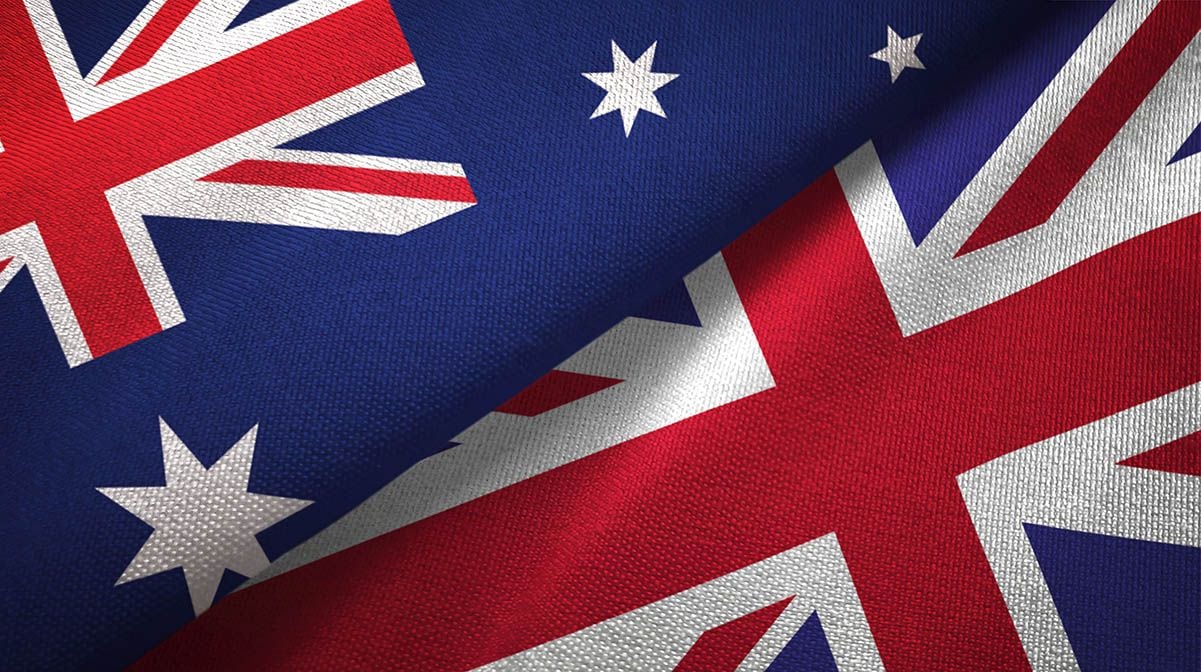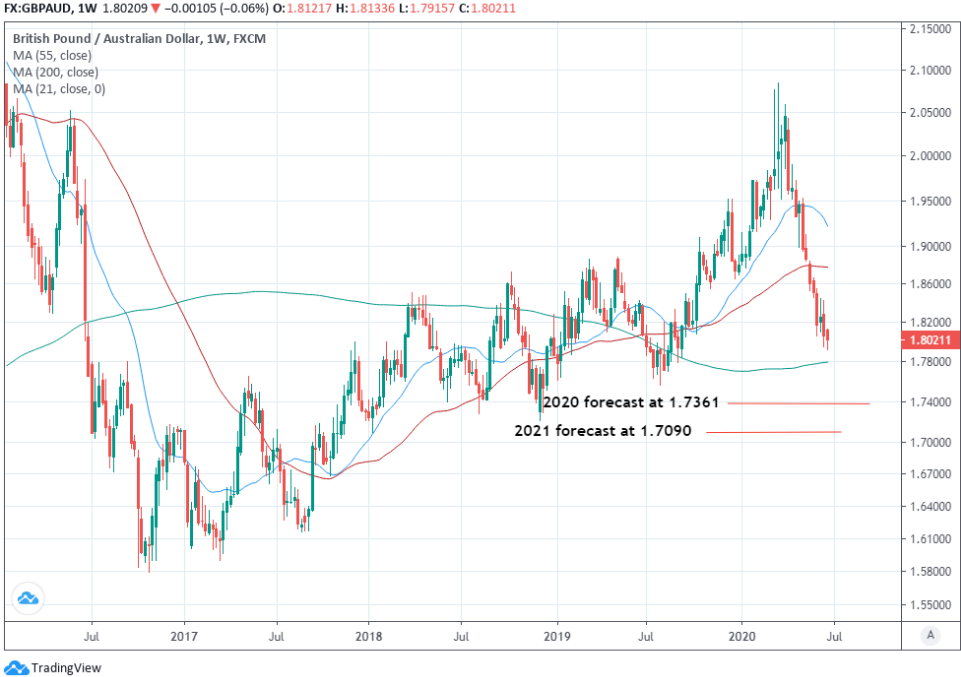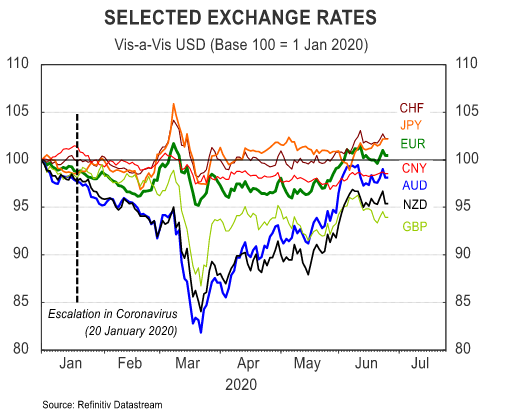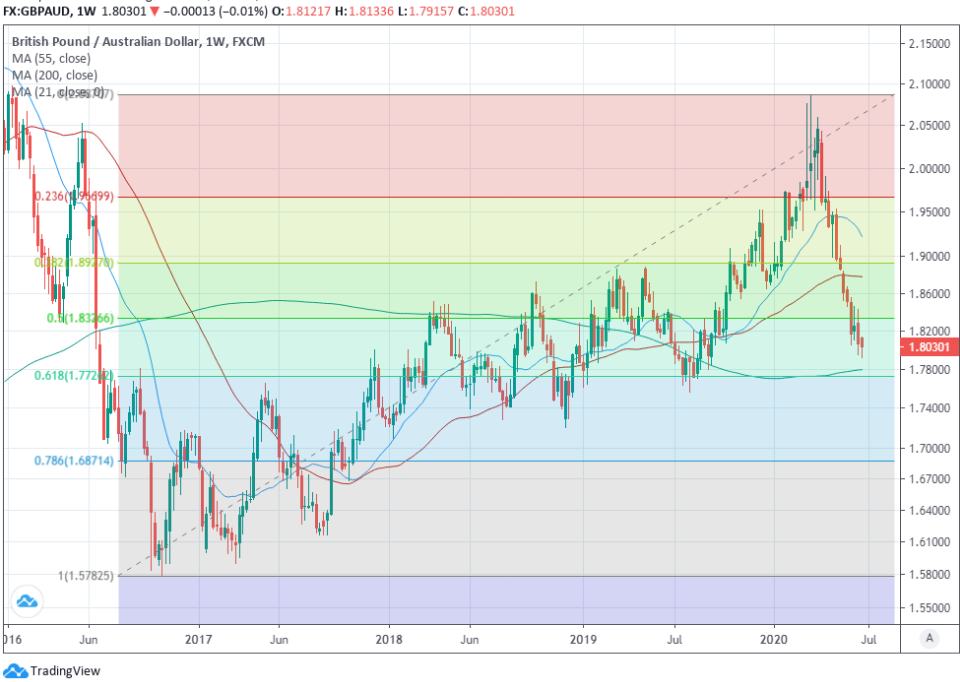The Pound-Australian Dollar Downtrend Endures as CBA Forecasts Point to More Pain Ahead
- Written by: James Skinner
- GBP slides against soft AUD into weekend as Sterling underperforms.
- AUD also on back foot amid softening iron ore but tipped for resilience.
- CBA forecasts GBP/AUD loss of -15.8% from April peak by year-end.

Image © Adobe Images
Achieve up to 3-5% more currency for your money transfers. Beat your bank's rate by using a specialist FX provider: find out how.
The Pound-to-Australian Dollar rate was eyeing the week's lows on Friday as Sterling underperformed major rivals, but forecasts from Commonwealth Bank of Australia warn of even further losses heading into year-end.
Sterling was quoted lower against all major rivals in the final session of the week as investors gave it a wide berth in spite of a returning bid for risk assets like stocks and commodities like oil, although iron ore futures slipped lower in price action that may also have encouraged underperformance in the Aussie.
Earlier gains for iron ore had helped lift the Aussie this week but the antipodean was lower against around half its major rivals ahead of the weekend, though not relative to Sterling, the U.S. and Canadian Dollars or the Norwegian Krone.
The Pound-to-Australian Dollar rate was trading -0.09% lower, placing it in the red by a small fraction for the week but Sterling is forecast by Commonwealth Bank of Australia to continue falling into year-end as the antipodean unit demonstrates resilience while Brexit concerns hold back the British currency.
"AUD/GBP will outperform over the remainder of 2020," says Kim Mundy, an FX strategist at CBA. "The improving global economy and solid Australian bulk commodity prices support AUD/GBP. On the flip side, uncertainty about Brexit developments will continue to limit GBP upside. However, once Brexit uncertainty has passed, we expect some consolidation in AUD/GBP."
Above: Pound-to-Australian Dollar rate shown at weekly intervals with CBA forecast levels highlighted.
The Pound-to-Australian Dollar rate has fallen just more than -13% between its early April peak around 2.06 and this week's low of 1.7920, but CBA sees it ending the year at 1.7361.
That would extend the post-April decline to -15.8% and implies a -8% 2020 loss.
"We expect AUD to remain within its recent 0.68‑0.70 US cent range in coming weeks after its v‑shaped recovery. Elevated coronavirus cases in the US will also remain a near‑term headwind to AUD, despite signs that the Australian, and global, economy is on the path to recovery. There is a risk of some additional short‑term AUD volatility ahead of month end," Mundy says.
This is after forecasts for the Australian Dollar were upgraded in June, with the AUD/USD rate seen ending the year at 0.72, up from 0.6850 on Friday, after having traded in an envisaged 0.68-to-0.70 range throughout the summer.
The Aussie was expected to extend a multi-year decline against the Dollar in 2020 until the coronavirus crashed the global economy, injuring all financial assets one way or another before ultimately giving birth to a new economic cycle that's seen investors favour cyclical, commodity currencies.
When combined with CBA's forecast for a GBP/USD decline from 1.24 on Friday to 1.23 by the end of September, and only a modest recovery to 1.25 by year-end, these projections imply and explain the substantial losses that are expected tor remain a burden for the Pound-to-Australian Dollar rate.
Above: CBA graph showing relative performance of major currencies against the U.S. Dollar.
"Beyond the very near term, we anticipate GBP/USD to gradually recover. GBP/USD is already significantly undervalued relative to the value implied by price deflator differentials (purchasing power parity) and real UK-U.S. two year swap rate differentials," Mundy writes.
GBP/AUD is an amalgamation of AUD/USD and GBP/USD so can be viewed as the outcome of a race between the latter two exchange rates, although Sterling has been losing that race for months after having done relatively better during the "liquidity crisis" that stoked volatility in mid-to-late March.
April's capitulation at 2.06 marked the beginning of a mean-reverting trend that was triggered and is encouraged by the turn of the global economic cycle as well as the risk that Brexit trade negotiations see the UK and EU doing business under World Trade Organization (WTO) terms.
"The downside risk facing the economy following a no trade deal with the EU means additional BoE easing (rate cuts and/or expansion of the asset purchase facility) will be required," Mundy says. "Brexit uncertainty is still elevated. If UK-EU trade negotiations do not bear fruit shortly, AUD/GBP can lift because the risk of a hard Brexit will also increase."
Pound Sterling was trading at post-referendum highs and not far from pre-financial crisis levels before April's capitulation, at a point when an ever contentious 'no deal' Brexit had never been more likely and as fundamental headwinds were turning to tailwinds for the Australian Dollar.
Forecasts imply further downside for the Pound-to-Australian Dollar rate but rest on the assumption of continued rising demand for the Aussie and at best, a UK-EU free trade agreement that throws up as many questions about the UK's future economic growth potential as it answers.
Above: Pound-to-Australian Dollar rate shown at weekly intervals with Fibonacci retracements of post-referendum recovery. 200-week moving-average in green.







